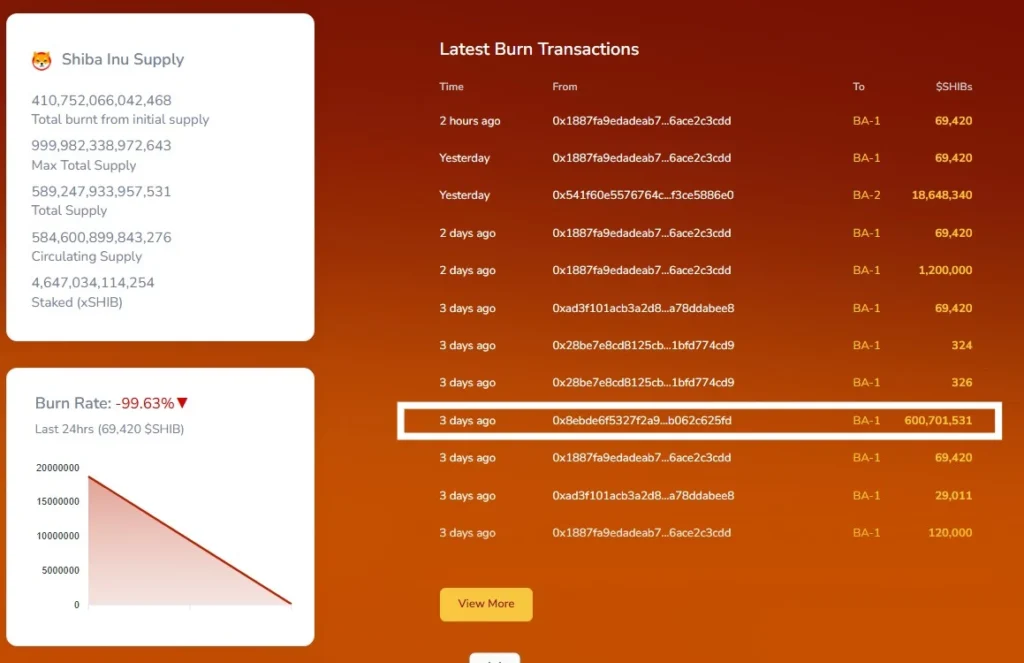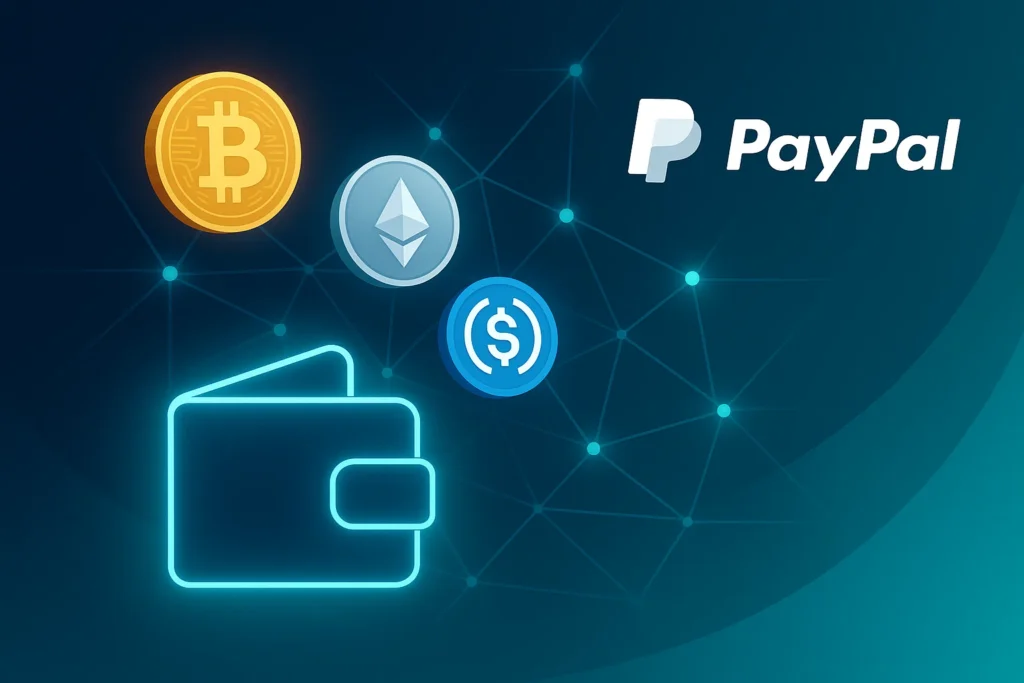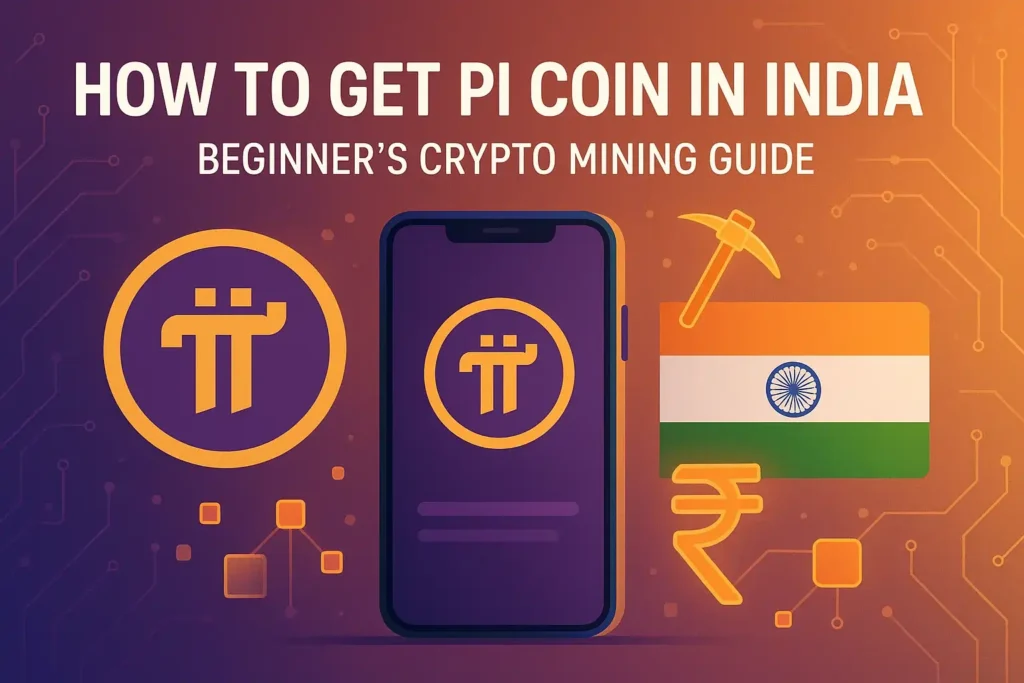A Complete Guide to Token Burning with Shiba Inu Case Study
This blog is for informational purposes only. It does not constitute financial advice. Always do your own research before investing in any cryptocurrency.
600 Million SHIB Tokens Burned – But Why?

Recently, the Shiba Inu (SHIB) community burned over 600 million tokens in a single day. The event triggered a 16,700% surge in SHIB’s burn rate — grabbing headlines across crypto media. Read full story
But what does “coin burn” actually mean?
Can burning tokens truly increase value?
In this blog, we’ll explain everything about token burning, compare it with share buybacks, explore its pros and cons, and show you how it’s played out for Shiba Inu.
📌 Takeaway:
- SHIB has burned 410 trillion tokens to date.
- But with 589+ trillion still in supply, the road to $1 is unrealistic in the near term.
- Token burn needs to be paired with strong demand and real-world utility.
📑 Table of Contents
- What is Coin Burn in Crypto?
- Coin Burn vs Share Buyback – The Analogy
- Why Do Crypto Projects Burn Tokens?
- Pros and Cons of Token Burning
- Case Study: Shiba Inu Token Burn
- Real-World Analogy – Is Burning Like Inflation Control?
- Where to Track Token Burns?
- Final Thoughts
What is Coin Burn in Crypto?
- Coin burning is the process of sending tokens to a burn address, where they become irretrievable.
- This effectively removes them from circulation forever.
- Burn addresses are like “black holes” — one example is:
0x000000000000000000000000000000000000dead
Coin burn = digital scarcity creation.
Projects often use it as a strategy to reduce oversupply and increase long-term value.
🏢 Coin Burn vs Share Buyback
Concept of burning crypto tokens might seem unique to the blockchain world, it shares many similarities with a traditional financial practice known as the share buyback. In both cases, the goal is to reduce the available supply of the asset — whether it’s stocks or tokens — in order to increase scarcity, support price growth, and reward existing investors or holders. However, the mechanisms, motivations, and execution differ significantly between the two. Understanding the similarities and differences between coin burns and share buybacks can help both traditional investors and crypto enthusiasts better evaluate project strategies and market potential.
Below is a detailed comparison to help you understand how these two supply-reduction techniques function in their respective ecosystems.
| Coin Burn | Share Buyback |
|---|---|
| Tokens are destroyed forever | Shares are repurchased and retired |
| Reduces crypto token supply | Reduces number of public shares |
| Can increase token price | Can raise stock value |
| Open to all crypto holders | Usually conducted by company leadership |
- Both methods attempt to boost value through scarcity.
- They’re often used as tools to reward loyal holders and signal confidence.
Why Do Crypto Projects Burn Tokens?
1. Reduce Total Supply
One of the primary reasons crypto projects burn tokens is to reduce the total circulating supply. When a cryptocurrency has an excessively large supply, each individual token tends to hold less value due to the basic principles of supply and demand. By permanently removing tokens from circulation through burning, projects aim to increase scarcity, which can potentially support long-term price growth — provided that demand remains stable or increases.
Take Shiba Inu (SHIB) as an example. The project originally launched with a massive total supply of 1 quadrillion tokens, which contributed to its very low per-token price. To address this, the SHIB community and developers began implementing token burns as a deflationary mechanism. As of 2025, over 410 trillion SHIB tokens have been burned and permanently removed from the supply. A recent instance in July 2025 saw 602 million SHIB tokens burned in a single day, highlighting the project’s continued focus on reducing supply.
However, it’s important to note that while reducing supply through burns may create upward price pressure, it does not guarantee a price increase. The actual impact depends heavily on factors like market demand, token utility, and community adoption. That’s why burning is most effective when paired with broader ecosystem growth and real use cases — something the SHIB ecosystem is actively working toward.
2. Boost Token Value
2nd major reason crypto projects burn tokens is to boost the value of the remaining tokens. The logic is simple: by reducing the total supply through burns, each token becomes scarcer, which can lead to increased value per token if demand remains steady or grows. This strategy is especially effective when combined with real utility and strong community support.
A well-known example of this is Binance Coin (BNB). Binance, one of the world’s largest cryptocurrency exchanges, has a built-in quarterly token burn mechanism. Every three months, Binance uses 20% of its profits to buy back and burn BNB tokens. One of the most impactful burns occurred in Q1 2021, when Binance burned over 1 million BNB tokens, worth approximately $595 million at the time. Following this aggressive burn, BNB’s price surged, hitting all-time highs in that period — driven by both the reduced supply and growing utility of BNB in trading fee discounts, DeFi platforms, and smart contracts.
This shows how planned and regular burning, especially when tied to platform profits or usage, can have a real impact on price and investor sentiment. However, just like in the case of Shiba Inu, burning alone isn’t enough — it needs to be backed by use-case demand, community engagement, and long-term development.
3. Create Long-Term HODL Value
Another key reason why crypto projects burn tokens is to create long-term value for holders (HODLers). In the crypto space, HODLing refers to the strategy of holding a token over a long period instead of trading it frequently. When projects implement regular or large-scale token burns, they send a strong signal to the community that they are committed to long-term scarcity and value preservation. This encourages investors to hold onto their tokens, with the expectation that reduced supply and ongoing development will lead to price appreciation in the future.
A good example of this is Terra Classic (LUNC). After its massive collapse in 2022, the community introduced a burn tax on all on-chain transactions, where a small percentage of each transaction was burned. This gave existing LUNC holders hope for recovery by reducing the bloated supply over time. While the price didn’t skyrocket instantly, the regular burns created a more optimistic environment for long-term holders and re-established some faith in the ecosystem.
This strategy applies to Shiba Inu (SHIB) as well. The SHIB community’s ongoing burn efforts — including the burn of over 410 trillion tokens — are part of a larger movement to make the token deflationary over time. By consistently removing tokens from circulation, SHIB aims to reward loyal holders who believe in the project’s long-term potential.
Ultimately, burns that are tied to real utility, community activity, or protocol upgrades help build trust and reinforce the idea that holding a token can pay off in the future.
4. Generate Hype and News Buzz
Crypto token burns are not just technical actions — they’re also powerful tools to generate hype and grab media attention. When a project announces a significant token burn, it often creates a wave of excitement, social media buzz, and speculative trading. This is especially true in communities that thrive on momentum and headlines, like meme coin ecosystems. Burn announcements act like marketing events, pulling in both new investors and old supporters with the promise of scarcity, commitment, and price movement.
A perfect example of this is Shiba Inu (SHIB). Every time SHIB conducts a large-scale burn — like the 602 million token burn in July 2025 — it immediately trends across platforms like X (formerly Twitter), Reddit, and crypto news portals. These burns often spike search interest, increase social engagement, and briefly push the token into higher trading volumes, even if the actual price impact is limited. The community treats such events as milestones, and they’re used to keep investor morale high and conversations alive.
This tactic has been used by many projects, including SafeMoon, LUNC, and even BNB, where each burn cycle becomes a mini-event in itself. It creates a perception of progress, which is often just as valuable in the short term as any actual technical upgrade.
5. Built-in Burn Mechanisms
Some crypto projects go beyond one-time or manual burns and instead implement built-in burn mechanisms directly into their smart contracts or tokenomics models. This means a portion of tokens is automatically burned during specific activities, such as every transaction, swap, or fee. These automated burns ensure that the token supply decreases steadily over time — without requiring separate announcements or manual action from developers.
A strong example of this approach is Binance Coin (BNB). While BNB conducts quarterly manual burns, it also introduced an Auto-Burn mechanism in 2021, which calculates the burn amount based on the token’s price and blockchain activity. Another great example is Terra Classic (LUNC), where a burn tax was added to every transaction — ensuring that a fixed percentage of tokens is destroyed with every trade. Even Shiba Inu (SHIB) is integrating burn mechanisms into its ecosystem, like the Shibarium Layer-2 blockchain, which includes built-in features to burn SHIB tokens during on-chain activity.
These systems are effective because they remove tokens continuously, adding long-term deflationary pressure without relying on hype cycles. They also give confidence to holders that supply will keep shrinking as the network grows in usage.
Pros and Cons of Token Burning
However, while token burning can deliver positive psychological and economic effects, it also has limitations and risks. Not every burn leads to higher prices or market trust, especially if the project lacks genuine utility, transparency, or community adoption.
Below are the key advantages and disadvantages of token burning to help you understand the full picture before jumping into hype-driven announcements.
Benefits
- Increased scarcity improves perceived value.
- Supports long-term growth if paired with utility.
- Signals confidence from developers.
- Attracts investor interest through events.
Drawbacks
- No guarantee of price increase.
- Can be used as hype without real utility.
- Short-term pump/dump risk.
- May mislead retail investors if not properly explained.
Ultimately, token burning is only one part of a healthy crypto project. It’s most effective when combined with strong community support, solid utility, and transparent development. For up-to-date analysis on which projects are using burns meaningfully — and which ones are just making noise — head over to MiningMinds.io for expert insights and real-time burn tracking.
Absolutely! Here’s your content rewritten in a blog-friendly, SEO-optimized style, with smooth transitions, keyword integration, and reader engagement in mind:
Case Study: Shiba Inu Token Burn
To better understand how token burning works in real scenarios, let’s take a look at one of the most popular meme coins — Shiba Inu (SHIB) — and analyze the impact of one of its largest recent burn events.
Event Recap
On July 30, 2025, the Shiba Inu community witnessed a massive burn of 602 million SHIB tokens in a single day. What made this burn stand out was that a single wallet alone contributed 601 million tokens, sending them permanently to a dead address, effectively removing them from circulation forever.
This spike was largely fueled by the deployment of new burn mechanisms on the Base blockchain, including ecosystem-level integrations that automatically trigger burns during on-chain activity. As a result, SHIB’s burn rate surged by approximately 16,700%, setting social media and community forums abuzz.
Market Impact
Despite the record-breaking burn volume, the immediate market reaction was underwhelming. Instead of boosting SHIB’s price, the token actually dropped by around 5% shortly after the event.
This highlights a critical point: burning tokens alone does not guarantee a price increase. Without sufficient demand or positive sentiment, a reduced supply can only do so much. Technical indicators reflected this uncertainty, with the Relative Strength Index (RSI) hovering around a neutral 46–48 range, signaling a lack of strong bullish momentum.
Real-World Analogy: Inflation Control
To put this into perspective, imagine a country where the government prints too much money. Over time, inflation rises and the value of the currency drops. To combat this, the central bank might remove excess cash from the system to stabilize prices.
Similarly, in the crypto world, token burning acts like inflation control — reducing supply to help maintain or potentially grow value.
However, just like in economics, supply control only works when there’s real demand. Without utility, adoption, or investor interest, scarcity alone may not move the needle much.
By studying cases like SHIB, it becomes clear that token burns are only effective as part of a bigger picture — one that includes utility, community strength, and transparent development.
Where to Track Token Burns?
Stay ahead by following real-time burn data from reliable platforms:
- Shibburn.com – SHIB burn dashboard
- MiningMinds.io – Track burn events, crypto updates, and DeFi trends
- CoinMarketCap.com – Supply stats and token metrics
- Etherscan.io – Verify burn transactions on Ethereum
- Twitter/X handles of crypto projects (e.g., @shibtoken, @cz_binance, @LUNCDAO)
Final Thoughts
Token burning is a powerful mechanism in the world of crypto, often seen as a sign of commitment, scarcity, and long-term value creation. From Shiba Inu’s massive burns to built-in deflationary models in newer projects, the concept continues to evolve and influence how investors perceive digital assets. However, it’s important to remember that burns alone are not magic bullets — they must be backed by real demand, community utility, and transparent project goals.
Frequently Asked Questions (FAQ)
What is coin burning in crypto?
Coin burning is the process of permanently removing cryptocurrency tokens from circulation by sending them to an unrecoverable wallet address (often called a “burn address”). This reduces the total supply and is often used to create digital scarcity, much like deflation in traditional economics.
Why do crypto projects burn their tokens?
Projects burn tokens to:
- Reduce supply and potentially increase value.
- Reward long-term holders by creating scarcity.
- Control inflation within their token economy.
- Generate hype and attention from the community and media.
- In some cases, to fulfill promises made in tokenomics models.
Does burning tokens increase the price
Not necessarily. While reducing supply can lead to price appreciation, token burns alone do not guarantee a price increase. Demand, utility, market conditions, and investor sentiment also play crucial roles.
What is a burn address?
A burn address is a wallet with no known private key, meaning tokens sent there can never be retrieved or spent. One commonly used Ethereum burn address is:0x000000000000000000000000000000000000dead
Can coin burning be bad?
Yes, in some cases:
- It can be used as a gimmick to artificially inflate hype.
- If not tied to real demand, burns can fail to impact price.
- Some investors see it as a lack of better utility or token use-case.
What happened in the recent Shiba Inu token burn?
On July 30, 2025, the SHIB community burned over 602 million tokens, with one wallet alone sending 601 million SHIB to a burn address. Despite the huge burn, SHIB’s price dropped by ~5%, highlighting that burns need strong market demand to impact value.
Where can I track upcoming token burns?
You can track major token burn events and real-time data on platforms like:
- MiningMinds.io – Trusted source for crypto burn insights, project data, and tokenomics breakdowns.
- Etherscan (for Ethereum-based burns)
- CoinMarketCap or CoinGecko (some tokens publish burn stats here)


